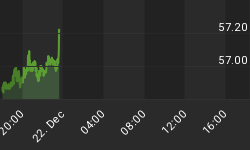Though there are undoubtedly great dissimilarities, too, between the two episodes, we wrote some while back that, in many ways, 2002-3 was shaping up a lot like the period 1986-7.
Back then the collapse in commodity prices - partly brought about by the Saudis trying to discipline Venezuela - was accompanied by a deliberate policy to topple the Reagan SuperDollar which had soared into the stratosphere, rising 58% on a trade-weighted basis in five short years (compared to the 43%, seven-year ascent this time around).
It also led to declines in measured cost of living indices across the developed world and the inevitable chorus heard was of a fear of a deflation which was resisted manfully everywhere, with interest rates reaching generational lows and budgets being relaxed accordingly.
But, sad though inevitable, as it was, the trough in CPI was all too momentary: the US version more than quadrupled from 1.1% yoy to 4.5% inside 11 months; the UK RPI shot from 0.7% to 4.5% on the same sort of timescale; the comparable indicators in West Germany and Japan switched from roughly 1% to +1%; and Switzerland saw a small negative climb swiftly to a number in excess of 2%.
Before long, it was not so much a question of trying to lower the dollar as of trying to stabilize its plunge.
Before long, bond yields - having neared a 13-year, post-Bretton Woods, low in the US were screaming higher, with 10-year Treasury Notes adding 330 basis points (3.3%) to theirs, with 300bps of that coming in just six months in mid-1987.
All the while, easy money had, of course, been pouring into the stock market, but, with the trade deficit widening and worries mounting about the sustainability of US fiscal policy, the rise was on increasingly shaky ground.
Finally, one weekend in the autumn, the US Treasury Secretary, starting to fret about how he could help his party get re-elected, issued a veiled threat that if other countries did not 'do their bit for global growth' - i.e. inflate more forcefully - he would no longer help prop up the ailing Greenback.
You will all probably remember, or have read, enough of the folklore of the Crash of '87 to make a continuation of this story superfluous.
While not wishing to belabour a point, or to stretch comparisons between what are certainly two very different eras, the broad parallels between the events we have described above and those unfolding today are, at the very least, suggestive.
Just for starters, four topics have come to dominate the financial agenda:
- the US trade gap and the fate of the dollar;
- the budget deficits being run-up in just about every major country, but especially in the US;
- the question of whether the bond market vigilantes are right to start worrying about inflation (as we have suggested all along was almost certain to be the case) rather than riding the deflation-scare rally lower and lower in yield;
- and the increasing itch to portray this stockmarket rally as sustainable, rather than as a bear market bounce.
Just keep in mind what happened sixteen years ago...
(This article appeared as the lead-in to Capital Insight's July edition of the'Monthly Insight & Strategy' which can be found at http://www.capital-insight.com/weeklyinsight.asp)














